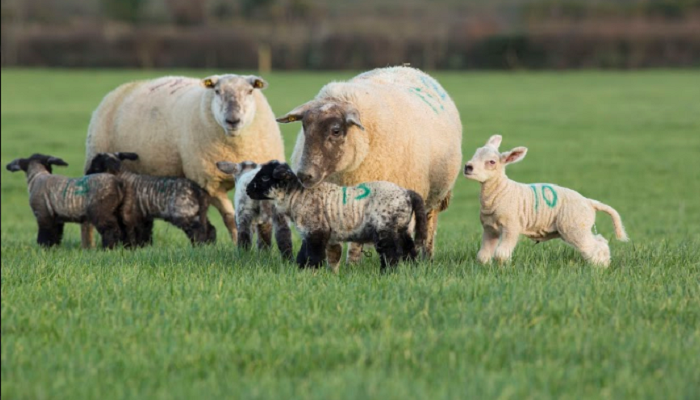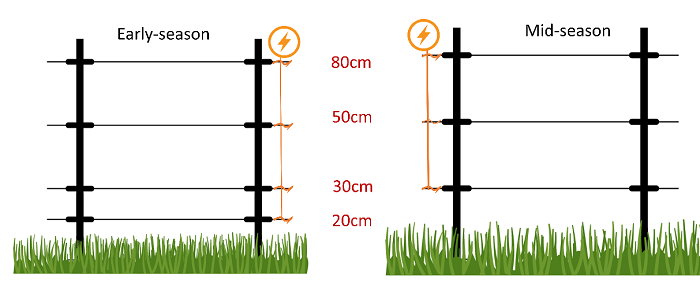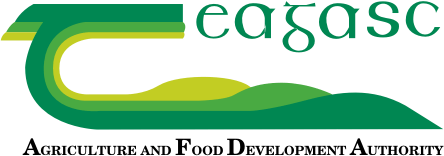16 April 2024
Fertiliser, grassland and supplementation advice for sheep farmers

Difficult weather and poor ground conditions have delayed turnout and created other difficulties on sheep farms. In this article, the Teagasc Sheep Specialist team look at steps to get the grazing year back on track.
Fertiliser
- Have fertiliser available in the yard and apply to grazing and/or silage ground once conditions are suitable.
- For grazing ground, apply between 20-30 units/ac or 25-37.5kg/ha of nitrogen (N), depending on the stocking rate.
- For silage ground, aim to apply up to 60 units/ac or 75 kg/ha of N for first-cut silage, aiming to cut a proportion of high-quality silage from mid to late May.
- Phosphorous (P) and potassium (K) will be required where ground hasn’t received slurry and will need to be applied in as part of the N application or in the form of products such as 0-7-30, where farms have an allowance. Also consider using products containing sulphur (S).
- Later cuts may be needed to replenish silage stocks.
- As trafficability is an issue on farms, target dry areas first and have the fertiliser working – even if this means smaller stop/start overall applications.
Grazing
- Aim to get the grazing rotation back on track.
- Group up ewes into larger grazing groups – bar problem cases – where feasible. This will reduce the time spent grazing out fields and increase regrowth.
- Make use of temporary fencing using electrified poly wire, where needed, to reduce grazing areas.
- Implementing flexible methods to sub-divide grazing areas has a number of benefits including:
- Better control / utilisation;
- Better regrowth;
- Shorter residency period;
- Better animal performance.
When using temporary fencing ensure the fencer is suitable to cover the total length of all strands of wire being powered; connect power to the open end of reel; ensure good connection between strands; ensure the fencer is well earthed; and check for breaks in the wire. The fencer must be capable of delivering at least 3,000 volts, ideally 5,000 volts, to train lambs to respect the fence. Recommended heights for early and mid-season can be seen in Figure 1.
Figure 1: Recommended heights for 3 and 4 strand poly wire fence

Supplementation
Generally from five weeks post lambing onward, supplementation should be targeted towards lambs as opposed to ewes. There are a few exceptions that need to be considered in the short term until conditions improve:
- March onward born yearling and triplet rearing ewes will need to continue to be supplemented and their lambs should have access to creep feed.
- Problem ewes and those in poor body condition rearing twins should be fed 0.5kg/head/day where there is adequate grass supplies. Where grass supplies are scare, this should be higher and offered in split feed.
- Supplementing lambs (excluding the above example) where grass supplies are tight or stock are under nutritional pressure is an option. Best economic responses were achieved feeding a limited amount, e.g. supplementing a rate of 300/g/lamb/day.
